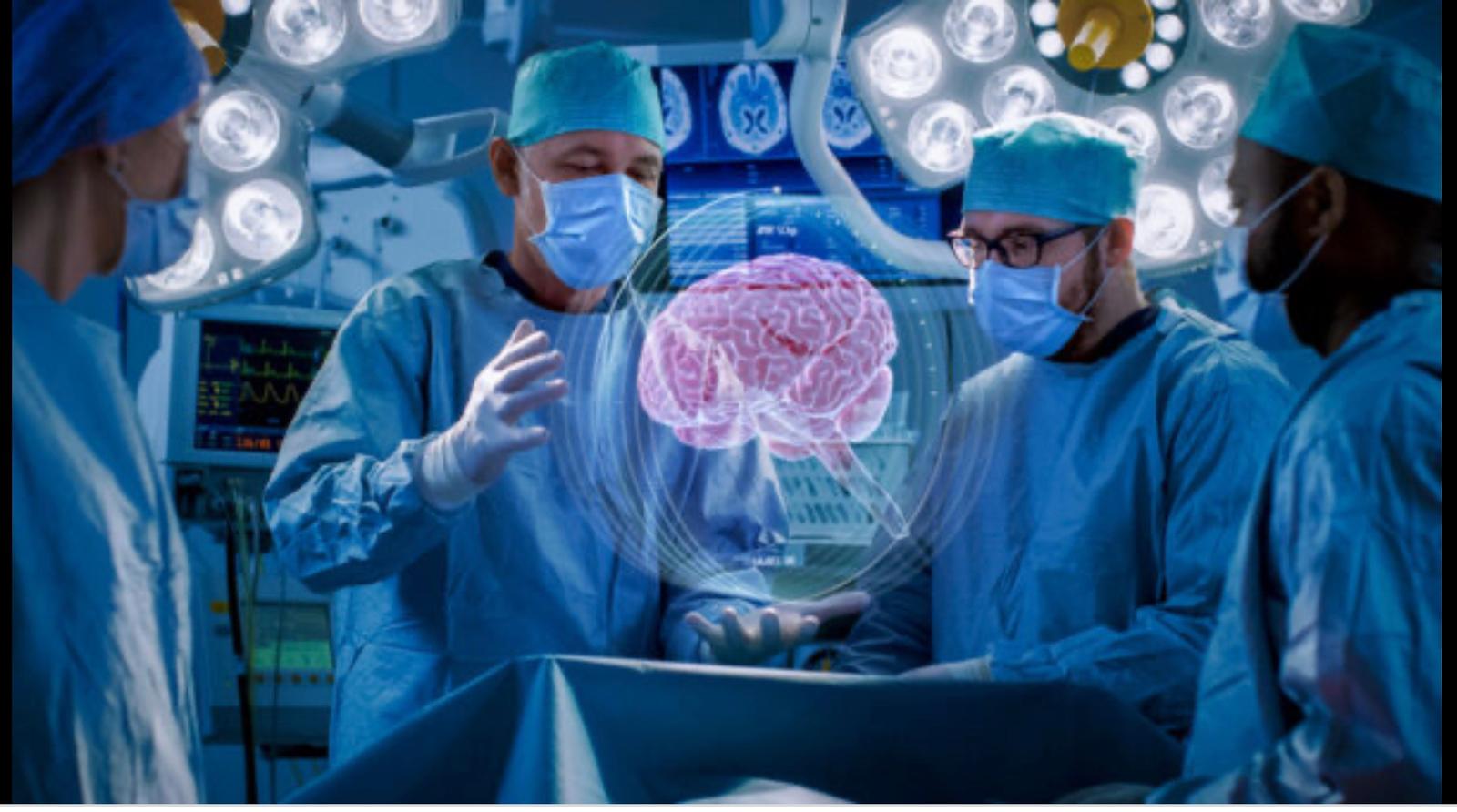Augmented reality’s ability to integrate digital information with the real-world environment has the potential to enhance and improve healthcare in a variety of groundbreaking ways. Diagnosis, telehealth visits and surgeries all stand to benefit from increased accuracy and efficiency, and AR is already been integrated into healthcare in some places. AR is expected to generate $1,918.6 million in the healthcare market by 2026. (Research Dive)
Collecting Blood Samples with Augmented Reality
If you’ve ever had your blood drawn, you may have experienced the phlebotomist struggling to find a vein. The hit-and-miss of this procedure can be painful, time-consuming and stressful for both parties. At AccuVein, a medical device company, they use AR technology to convert the heat signature of veins into an image. That image is then superimposed onto the patient’s skin, making the vein easier to find the first time. (Harvard Business Review, 2019)
Augmented Reality in the Operating Room
Imagine a surgery in which information is projected directly onto the patient without physicians having to move their attention to a monitor or another team member for updates. Microsoft Hololens 2 does just this, allowing the surgeon to keep both hands on the procedure. These hands-free solutions, according to Deloitte Research, will transform the healthcare business model. Automatic external defibrillator (AED) location is an emergency application for AR outside of the operating room. Using an app on a smartphone, anyone can see locations of the nearest AEDs overlayed onto the environment.
AR in Telehealth and Diagnosis
The number of telemedicine visits increased dramatically during the pandemic, and AR can improve this experience as well. With augmented reality, patients and care providers can draw and annotate on a 3-D screen. When combined with machine learning algorithms, AR can help detect diseases such as cancer. Google’s 2020 announcement for an AR-based microscope for the Department of Defense is just such an example. Real-time camera images are processed with computer diagnostics to diagnose disease at an early stage. (mobidev.biz)
AR can help a patient understand how a drug work in their body without sifting through complicated medical texts. It could even help students learn about the human body in a highly interactive and engaging 3-D format. There are many more applications for augmented reality in healthcare; this is just the tip of the iceberg.



